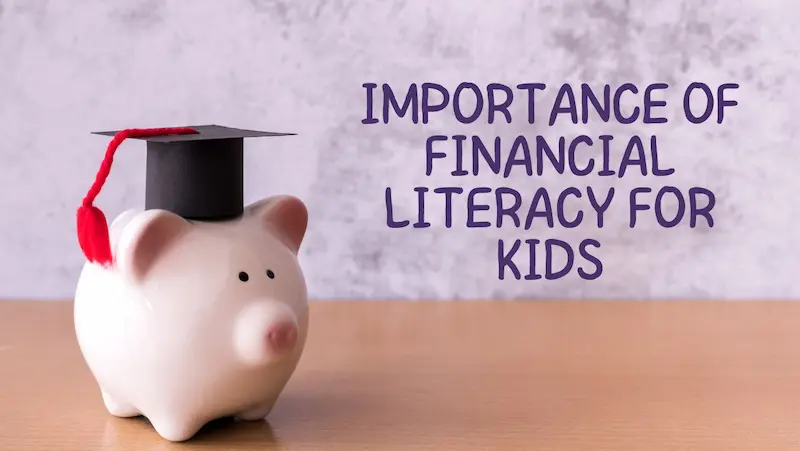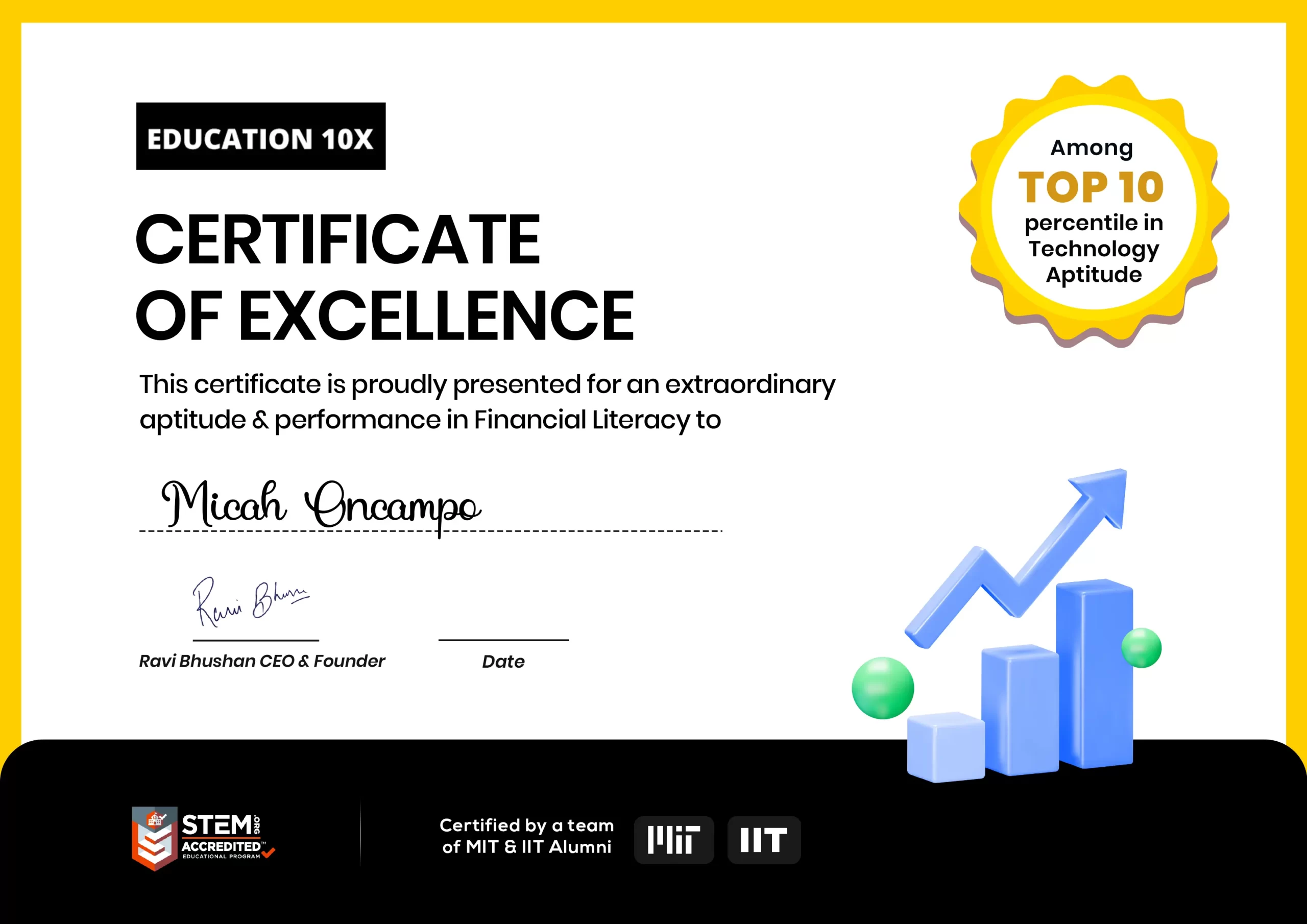Money management is an essential life skill, and it’s never too early to start teaching kids about it. Developing healthy financial habits from an early age can set them up for a secure and prosperous future. However, discussing money with children can be challenging.
That’s why we’ve compiled a list of do’s and don’ts to guide parents and educators in effectively teaching kids about money management. In this blog, we’ll explore various sub-topics related to money management for kids, ensuring a positive and empowering learning experience.
Before diving into the blog, check out this video below.
Table of contents
- Benefits of Early Financial Education
- The Do’s of Teaching Kids About Money Management
- The Don’ts of Teaching Kids About Money Management
- Age-Appropriate Money Lessons for Kids
- Tools and Resources for Teaching Kids About Money Management
- Common Mistakes Parents Make When Teaching Kids About Money Management
- Conclusion
- Frequently Asked Questions (FAQs)

Benefits of Early Financial Education
A vital life skill that can prepare kids for future financial success is teaching them how to manage their money. Unfortunately, the inclusion of financial literacy in the standard educational curriculum is frequently neglected, leaving many young people ill-equipped to handle the complexity of personal finance. Financial literacy games for kids are also a good choice to introduce kids to the world of finance. Let’s look at some of the benefits of early financial education for kids:
1. Building a Strong Financial Foundation:
Creating a Firm Financial Foundation: Early financial education aids in the development of a strong understanding of the fundamentals of financial management in youngsters.
We equip children to make wise financial decisions from a young age by educating kids about budgeting, saving, and responsible spending. This foundation puts them on the right track for later achievement and financial security.
2. Developing Good Saving Habits:
Saving is a key component of being successful financially. Children learn the value of delaying gratification and form crucial saving habits when the idea of saving is introduced to them at a young age, and it is the one of good habits for students and kids.
They are aware that saving a portion of their earnings or allowance for future needs or objectives is a smart move. Their capacity to overcome financial obstacles and create a stable financial future may be significantly impacted by this habit.
3. Instilling Smart Spending Habits:
Children who receive financial education are better able to distinguish between needs and wants and are more aware of the effects of impulsive spending. It gives individuals the knowledge and ability to choose wisely while making purchases.
We can equip kids to be responsible consumers and help them avoid the traps of excessive debt by promoting smart spending and teaching them how to prioritize their expenses.

4. Promoting Financial Independence:
Fostering Financial Independence: We encourage a sense of financial independence in youngsters by teaching them about money management. Early financial education empowers kids to manage their own money and make wise decisions. They become less dependent on others for financial help as they age and become better able to handle the complex financial issues that come with adulthood.
5. Developing Entrepreneurial Mindsets:
Financial education can inspire young people to become entrepreneurs. It promotes problem-solving, creativity and critical thinking skills for kids. Early exposure to financial concepts increases a child’s likelihood of having an entrepreneurial mindset, investigating ways to make money, and spotting chances for financial progress. They may be motivated by this to lead innovative businesses in the future.
The Do’s of Teaching Kids About Money Management

Financial literacy is a necessary ability for success and independence in today’s environment. We give kids the tools to handle their finances wisely for the rest of their lives by instilling this skill in them at a young age.
In this blog, we’ll look at the best practices for educating children about money management so that they can build solid financial habits and a solid basis for the future.
1. Start early:
The earlier you teach children about money management, the better. Children may understand fundamental ideas like saving, spending, and the value of money even at an early age.
Start by introducing them to coins and bills and explaining their use in the exchange of goods and services as well as their value. Gradually teach more difficult financial ideas as they get older.
2. Make it fun and engaging:
Children learn best when they are engaged and enjoying themselves. Include interactive exercises, games, and role-playing in your financial lectures.
You could, for instance, set up a pretend shop where kids may “buy” things with toy money or make a savings sheet with fun stickers to monitor their development. Making money management fun will draw their interest and help them remember the lessons.
3. Use real-life examples and experiences:
Children learn most effectively when they can connect lessons to actual events. Take advantage of chances to discuss money with them every day. Engage kids in grocery shopping, for instance, while outlining the value of budgeting and emphasizing the cost of goods and comparison shopping.
Encourage kids to use the money they receive as presents or allowances responsibly by emphasizing conserving some for future aspirations.
4. Encourage saving and budgeting habits:
Encourage youngsters to develop habits like saving and budgeting for kids, because doing so will help them become more responsible with their money. Whether it’s for a toy, a game, or a long-term goal like education or a car, encourage them to make savings goals.
Divide their allowance or income into areas for spending, saving, and sharing to assist them in developing a straightforward budget. Review their development frequently and acknowledge their successes to strengthen good behaviors.
5. Involve kids in financial decision-making:
Children who participate in financial decision-making get a better understanding of how money works and develop critical thinking skills. Include children in discussions about family purchases, setting aside money for vacations, or making decisions whenever it is acceptable.
Children are better able to make educated judgments because of this involvement.
6. Teach the Value of Money
It’s important to develop in kids a feeling of the worth of money and the sacrifices necessary to earn it. Encourage children to work extra hours or perform jobs that are age-appropriate in order to earn money.
Children learn the relationship between effort, money, and the capacity to buy wanted objects through connecting work and earning. They learn the value of money and how to make wise financial decisions as a result of this instruction.
It’s crucial for children to understand the value of money and how it is earned. Encourage them to earn money by completing age-appropriate chores or engaging in entrepreneurial activities, like selling lemonade or handmade crafts.
By associating effort with reward, children will learn the importance of hard work, patience, and the value of money.
The Don’ts of Teaching Kids About Money Management
Teaching children how to handle their money is a crucial life skill that can prepare them for future success in the financial world. However, it’s crucial to approach this subject cautiously and stay clear of certain dangers.
In order to assist parents and educators in navigating this vital area of their children’s education, we will examine the “don’ts” of educating youngsters about money management in this blog.
1. Don’t shield kids from financial realities:
Avoid protecting children from financial reality: Protecting children from financial realities is one of the biggest mistakes parents and educators can make. Children need to grasp the worth and constraints of money, despite the temptation to shield them from the anxiety or stress that comes with financial discussions.
Talk to kids in a way that is appropriate for their age about setting aside money, using it wisely, and learning from experience.
2. Don’t use money as a reward or punishment:
Avoid using money as a form of praise or punishment since doing so might lead to an unhealthy connection with money.
Children could have a distorted sense of the purpose of money if they only relate it to their performance or behavior. Instead, stress the value of responsibility and internal motivation in relation to money.
Teach kids that money is not a means of control or affirmation, but a tool for achieving goals and satisfying needs.
3. Don’t make money a taboo topic:
Families and schools shouldn’t avoid talking about money. Open communication about money matters aids in kids’ comprehension of how money functions and its importance in their lives. Encourage them to ask questions and give frank, age-appropriate responses.
This transparency will encourage a positive attitude towards money and sound financial judgment.
4. Don’t overspend or set a bad example:
Children pick up on the behaviors of the adults around them, therefore parents or teachers play a crucial part in forming their personal finance habits.
Spending too much or making impulsive purchases in front of children can convey confusing messages about how to manage your money.
Instead, illustrate good spending, saving, and budgeting practices to emphasize the need for careful money management.
5. Don’t make assumptions about kids’ financial knowledge:
Never rely on kids having a specific level of innate financial literacy or money management skills. You should evaluate their prior knowledge and adjust your teaching strategy accordingly. Start with fundamental ideas like coin identification and monetary worth. Introduce more sophisticated subjects like investing, budgeting, and investing as they get older.
Age-Appropriate Money Lessons for Kids

For children’s long-term financial well-being, it is essential to start teaching them about money management at an early age. Early financial education can provide our kids with the skills they need to manage their money wisely for the rest of their lives.
It’s crucial to adjust these lessons for their age and developmental stage, though. We’ll look at money management advice and lessons for young kids, pre-teens, and teenagers in this blog post.
FinChamps by BrightChamps is an exceptional financial literacy program designed to empower kids with the knowledge and skills needed to navigate the complex world of finance. With its innovative approach, FinChamps offers a comprehensive curriculum that covers various aspects of personal finance, including budgeting, investing, and saving.
Through interactive lessons and practical exercises, kids gain a solid understanding of key financial concepts and learn practical strategies to achieve their financial goals. With FinChamps, Brightchamps has created a valuable resource that equips kids with the tools they need to make informed financial decisions and secure their financial future.
Young Children (Ages 3-7)
Children are just starting to understand the concept of money at this point. Here are some money lessons for young kids that are acceptable for their age:
1. Explain the idea of money: Teach them the various coins and bill denominations. Allow them to play with play money and go pretend shopping.
2. Save, spend, and share: Explain the three fundamental financial decisions to them: saving, spending, and sharing. Encourage children to divide their pocket money or gifts into these divisions. For instance, kids could save aside money for a gift they want, spend some on smaller purchases, and donate some to a charity they like.
3. Piggy bank savings: Help children set up a piggy bank or transparent jar to save their money. Encourage consistent deposits and recognize their accomplishments. Through this practice, they learn the importance of conserving and postponing gratification.
Pre-teens (Ages 8-12)
Children’s knowledge of money grows as they approach pre-adolescence. The following financial lessons are appropriate for this age group:
1. Making money: Explain how you can make money by performing age-appropriate activities or simple tasks. This instills in them the virtue of perseverance and the relationship between work and compensation.
2. Basics of budgeting: Show them how to create a budget by giving them a certain sum of money to spend over a given time frame. Assist them in allocating the funds to several areas of expenditure, including savings, treats, and toys. Encourage them to choose wisely and within their means. By providing learning money for kids, you can teach them the basics of budgeting.
3. Comparison shopping: Take them on short shopping excursions and demonstrate how to assess costs and get the best value for your money. This promotes wise consumer behavior and introduces the idea of making well-informed decisions.
Teenagers (Ages 13-18)
Teenagers’ financial growth is at a crucial point. The following are important financial lessons for teenagers:
1. Savings objectives: Encourage them to establish both short- and long-term savings objectives. Help them develop a realistic strategy and comprehend the value of persistent saving, whether they are saving for a car, college, or vacation.
Teach them about checking accounts, debit cards, and online banking.
2. Banking and budgeting tools: Teach them how to keep a budget, manage their spending, and keep an eye on their transactions. Show them budgeting software so they can enjoy managing their money more.
3. Responsible borrowing: Discuss the advantages and disadvantages of borrowing money, especially those related to credit cards and student loans. Inform them about debt repayment options, interest rates, and possible repercussions. Stress the value of borrowing sensibly and steering clear of pointless debt.
Tools and Resources for Teaching Kids About Money Management

Money management is one of the most important life lessons we can impart to our children. Early financial education can assist children in forming responsible habits, making educated choices, and laying a strong basis for their future.
Thankfully, there are lots of tools and services out there today that can make teaching youngsters about money interesting and exciting. In this blog article, we’ll look at a selection of books, games, apps, and other materials made with youngsters learning about money management in mind.
Books
Books are a great approach to explaining financial ideas to children and providing them with real-world experiences. Here are a few titles worth mentioning:
1) “Money Lessons” by Brightchamps: “Money Lessons” is written in a language that is easy for children to understand and is filled with colorful illustrations. The book covers a range of important financial topics, including earning money, budgeting, saving, spending wisely, and giving back to others. It also includes real-life examples that illustrate the importance of making smart financial decisions.
2) Judith Viorst’s “Alexander, Who Used to Be Rich Last Sunday” follows Alexander as he discovers the value of saving, spending, and the repercussions of making impulsive purchases.
3) Stan and Jan Berenstain’s “The Berenstain Bears’ Trouble with Money” The bear family discusses issues including earning money, setting aside money, and separating needs from wants in this timeless series.
Games
Playing games can make learning about money management engaging and fun. Here are some well-liked games that instruct money management:
a) “Monopoly Junior”: This condensed version of the well-known board game aids in teaching kids the fundamentals of managing money and purchasing real estate.
b) “The Game of Life”: This board game guides players through significant life events while educating them about budgeting, selecting a vocation, and handling unforeseen costs.
c) “Money Bags: A Coin Value Game” is a fun game for younger kids that teaches them about different coin values and how to count them.
Apps
Thanks to the extensive use of technology, a variety of apps have been created to help kids learn about managing their money. Here are a few noteworthy choices:
1) “Money Lessons By BrightCHAMPS”: The world’s first gamified financial education app for kids and teens. With this app, your kid can learn finance for kids basics through stories & bite-sized lessons which come with real-world examples.
2) “Bankaroo”: Designed for older kids, Bankaroo provides a virtual bank where youngsters can manage their money, create spending plans, and keep track of allowances.
3) “FamZoo”: This app teaches kids financial literacy, including budgeting, saving, and charitable giving, by fusing digital and physical components.
Online Resources:
The internet is full of online materials for teaching kids about managing their money. Listed below are a few helpful websites:
1) “Money as You Grow” (moneyasyougrow.org): This website provides parents with lesson plans, exercises, and advice on how to teach their kids about money management at various developmental stages.
2) “Practical Money Skills for Life” (practicalmoneyskills.com): This extensive website provides a range of resources for financial literacy, including interactive games, calculators, and lesson plans for teachers.
3) “National Endowment for Financial Education” (nefe.org): NEFE offers materials for teachers, parents, and kids that cover a range of financial subjects through lesson plans, exercises, and films.

Common Mistakes Parents Make When Teaching Kids About Money Management
Children’s parenting must include teaching them effective money management abilities. Early behaviors and lessons they pick up can have a big impact on how financially secure they are later in life.
Nevertheless, despite having the best of intentions, parents frequently err while attempting to teach their children about money. We’ll look at some of the typical errors parents make in this important area in this blog and provide tips on how to prevent them.
1. Avoiding Money Conversations
Avoiding all conversations about money is one of the worst mistakes parents make. Parents could feel awkward talking to their kids about money or think that they shouldn’t be concerned about such things.
This method, nevertheless, may leave youngsters with a knowledge gap and prevent them from having a sound grasp of money.
Instead, parents should start age-appropriate financial dialogues with their children, introducing fundamental ideas and progressively enhancing their financial literacy.
2. Failure to Set a Good Example
Children pick up on their parent’s attitudes and behaviors through observation. Children are likely to acquire similar behaviors if parents have weak money management abilities or make rash financial judgments.
Setting a good example entails practicing frugal spending, putting money down for the future, and separating wants from needs. Parents provide a strong foundation for their children’s financial security by setting a good example for good financial behavior.
3. Neglecting to Teach the Value of Money
In the digital era of today, where transactions frequently take place electronically, money can appear immaterial. Children may therefore find it difficult to understand the importance of money and how hard work relates to value.
Whether it be through chores, allowances, or part-time jobs, parents must instill in their kids the value of earning money. Children who experience this learn the value of money, cultivate a strong work ethic, and recognize the effort needed to earn it.
4. Shielding Kids From Financial Realities
In an effort to save their children any stress or anxiety, parents may choose to shelter their kids from the realities of money. Although this goal is understandable, kids also need to be aware of how difficult it may be to manage money.
Exposing kids to the right information about setting up a budget, conserving money, and making prudent financial decisions can aid in their development of adaptation, resilience, and problem-solving abilities.
They can be better prepared for the future and develop a feeling of financial responsibility by having open discussions about money.
5. Ignoring the Power of Mistakes
Parents frequently strive to protect their children from financial missteps, but it’s important to teach children from these experiences. While they are still young and under parental supervision, letting kids make small financial mistakes offers beneficial learning chances.
Children can improve their critical thinking abilities and future decision-making by considering the effects of their actions. Instead of completely protecting their children from mistakes, parents should embrace the role of mentors.
The Importance of Financial Literacy for Kids
In today’s complex and dynamic world, the importance of financial literacy for children cannot be overstated. Here’s why:

1. Financial Security
Teaching kids about money from a young age sets them on a path to financial security in adulthood. The knowledge they gain helps them make informed decisions, avoid debt, and build a solid financial foundation.
2. Economic Participation
As future consumers, employees, and entrepreneurs, financially literate kids are better equipped to contribute positively to the economy. They understand how their financial choices affect not only their own lives but also society as a whole.
3. Avoiding Debt
Financial literacy helps kids understand the consequences of debt and the importance of responsible borrowing. This knowledge can prevent them from falling into financial traps later in life.
4. Empowering Choices
Children with financial literacy have the power to make choices aligned with their goals, whether it’s saving for a dream vacation, investing in education, or starting a business.
5. Case Study: The Positive Impact of Financial Education
A study by the National Endowment for Financial Education found that students who received financial education had a higher likelihood of saving money, paying off credit card balances, and planning for retirement.
Effective Strategies for Teaching Financial Literacy to Kids

1. Introduce the Concept of Money
Instructions: Start with the basics. Teach children the value of different coins and bills. Use real money to show them how transactions work, and explain the concept of earning and spending.
2. Teach Budgeting
Instructions: Show kids how to create a simple budget. Explain income, expenses, and the importance of setting aside money for savings and emergencies. Encourage them to track their spending in a journal.
3. Introduce Basic Banking
Instructions: Open a savings account for your child and involve them in depositing and tracking their savings. Explain the concept of interest and how it grows their money over time.
4. Encourage Entrepreneurial Spirit
Instructions: Foster creativity and business acumen by encouraging kids to start small businesses, such as a lemonade stand or selling crafts. Teach them about profits, expenses, and saving a portion of their earnings.
5. Use Age-Appropriate Resources
Instructions: Choose books, videos, and online resources that match your child’s age and comprehension level. For younger kids, use storybooks with money-related themes. For older children, explore educational websites and financial apps.
6. Incorporate Interactive Activities and Games
Instructions: Use board games like Monopoly or digital apps like “PiggyBot” to make learning fun. These games teach kids about money management, decision-making, and strategic thinking.
Online Courses or Workshops
1. Money as You Grow (Ages 3-18):
A free online resource by the Consumer Financial Protection Bureau that offers age-specific activities and tips to teach kids about money.
2. Everfi (Ages 8-18):
Offers interactive courses on financial literacy, including topics like saving, investing, and budgeting.
3. Mobile Apps and Games
PiggyBot (Ages 6-12): A virtual allowance tracker and savings app that helps kids learn about budgeting and saving.
4. Bankaroo (Ages 5-14):
An interactive virtual bank for kids, teaching them the basics of managing their own money.
Conclusion
In a world driven by financial decisions, imparting valuable money management skills to children is more crucial than ever. As parents and educators, we hold the power to shape young minds, equipping them with the tools they need to navigate the complex realm of personal finance.
Throughout this blog, we have explored the vital do’s and don’ts when teaching kids about money management. We have learned that leading by example, fostering open conversations, and encouraging hands-on experiences are essential practices. Conversely, we have also uncovered the potential pitfalls of neglecting financial education or instilling unhealthy attitudes toward money.
Striking a balance between nurturing responsible spending habits and cultivating a healthy relationship with finances is the key to raising financially literate individuals. By equipping our kids with these valuable skills, we empower them to navigate the financial landscape confidently and set a solid foundation for their future success.
Check out Brightchamps Blog Page for more similar educational and free resources for your kids growth!
Frequently Asked Questions (FAQs)
A1. Teaching, modeling, and practice are all necessary to help kids develop sound financial habits. Provide children with opportunities to earn and manage their own money, teach them budgeting skills, involve them in home finances, and encourage them to create savings goals.
A2. To start teaching your child about financial literacy, start by going over fundamental ideas like budgeting, saving, spending, and the significance of setting financial goals.
Use resources that are suitable for your child’s age to develop financial literacy, such as books, games, and internet tools. Encourage them to ask questions by having open dialogues about money.
A3. Teaching kids about the importance of money, establishing clear guidelines for spending and saving, and modeling responsible financial behavior are all important parts of teaching kids how to manage their money.
Provide them the freedom to manage their own finances, provide them chances to work and save, and talk to them about the effects of impulsive spending.
A4. Start by explaining the fundamental ideas of money, saving, and spending to your kids to help them develop. Inform them about the value of creating financial objectives and a budget. Give children age-appropriate financial management duties and include them in family financial talks.
You can also check out Money Lessons App By BrightCHAMPS.
A5. Stress the value of making wise financial decisions to stop your youngster from wasting money. Encourage comparative shopping, teach children to distinguish between necessities and wants, and discuss the negative effects of making impulsive purchases.
To instill a sense of fiscal responsibility in them, assist them in developing a budget and setting savings targets.
A6. Financial literacy instruction should begin as soon as possible. With the help of age-appropriate activities and conversations about money, kids as young as preschool age can begin learning fundamental financial concepts.
Financial literacy should be emphasised as kids get older throughout their school years and into adolescence.
A7. Preparing your child for the financial future involves several key steps:
a. Start early: Introduce basic money concepts and teach them about saving, spending, and budgeting.
b. Lead by example: Demonstrate responsible financial habits and involve your child in age-appropriate financial decisions.
c. Encourage saving: Help your child set savings goals and open a bank account.
d. Teach budgeting: Budgeting for kids is essential as it will help them to track down their expenses.
e. Introduce investing: As your child grows older, introduce them to the concept of investing and the potential benefits of long-term financial planning.
f. Foster entrepreneurship: Encourage creativity, problem-solving, and entrepreneurial skills to prepare your child for future financial independence.
A8. The ability to manage money can be taught. It is a collection of abilities and information that can be acquired through formal education, practise, and practical application.
Children and young adults need financial education, which is provided by schools, parents, and community organisations.
It is possible to effectively teach and foster financial literacy by utilising tools and activities that are age-appropriate.
A9. Parents are very important in helping their kids learn financial literacy. Although financial education may be offered in schools and other organisations, parents can reinforce these concepts at home and give real-world examples that are applicable.
Children can learn about budgeting, saving, investing, and appropriate spending from their parents.
Parents may develop a solid financial foundation for their children that will serve them well throughout their life by include their kids in money discussions and decisions.









